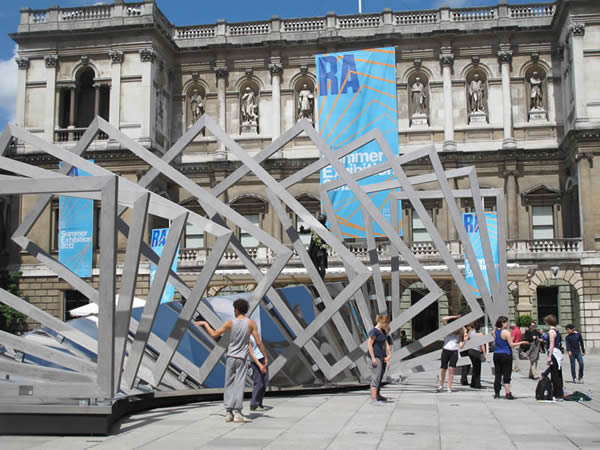I feel ambiguous about cities. And that after all these years of being inside them as part of their intrinsic fibre or looking at them from the outside or advising people who run cities.
I wish I felt more at ease when I think about cities and perhaps my wish for harmonious feelings is merely a reflection of tiredness and age. Like many I am aware how the city oscillates between the promise of infinite opportunity and the reality of unfulfilled potential; or the over-stimulation of dreamy adverts and the deadening dullness of endless asphalt; or the allure of collective consciousness and to mesh into the crowd and by contrast the daily grind of being on my own.
There is this massive gap between what so many want for themselves or from their city and what they ultimately get. I have experienced this myself.
There is a promise cities give me that I have desired, but rarely felt. I wanted to seamlessly connect with others, with things, with knowledge and insight and that with immediacy; I have felt the allure of being ubiquitous; to be here, there and anywhere and being in flow and fluidity; I have wanted to be like liquid seeping in and out of my inner worlds into the outer worlds; I have wanted to be aligned.
I have craved after the balming effects of engaging all my senses with the city, of hearing clearly and able to distinguish fine modulations of rhythm and tone, of seeing both with sharpness and with fuzziness, of smelling expectant tastes, of coalescing with the textures I touch be they hard, crumpled, smooth or soft. I have wanted to be alert, awake and alive. I have wanted to operate with a rich register of capacities and with openness.
I have wanted to be part of the city in a visceral way and to be sensually enriched. I have wanted my experiences of cities to be like a gentle fragrance. I have searched for soul and spirit of place and found it so often in small incidentals rather than the big gestures. I have wanted an ethos of urban generosity to imbue my physical and social environments as I have wanted myself to be encouraged to show random acts of kindness. Alas much of this has only happened on brief occasions.
I then thought can art help me. I reminded myself of Antanas Mockus the successful former two time mayor of Bogota between 1995 and 2003 who famously said: ‘When I do not know what to do anymore and what decision to take, I start thinking as an artist’. I thought his way of running a city would reduce my sense of the fracturing of cities. But what did he mean? I think this is what he meant. We live between two half worlds: the rational and the sensory and the arts at their best provide the best route into the sensory. We lose and yet we gain from the rational. It has a lifeless tendency, a constant reduction of complexity, a way of simplifying and narrowing.
This is seductive. It makes us feel that we know when all we have done is to reduce what we can know. It has not relaxed into uncertainty or ambiguity and that which is yet to be known. Yet it has a penetrating practicality. It helps get things done. It has a vocabulary and a jargon. And its words frame mindsets and mindsets in turn shape decisions and decisions create our worlds. Here is a sample and dear reader try to feel the life in them: Goal, objective, focus, strategy, profit making, maximizing, outcome, calculation, measurable, quantifiable, logical, solution, efficient, effective, economic sense, rational, linear.
The sensory vocabulary has a different aim. It is emotional, descriptive, it has imagery, it shows feelings, moods and atmospheres. It uses metaphors. It can uplift you or pull you down, make you relish a moment or suffer its consequences.
The artistic can jolt the rationalists or those in the corporate world as the values and attributes that dominate their life are almost diametrically opposed to the values promoted by artistic creativity. At its best artistic creativity and art can help provide an imaginative leap. It involves a journey not knowing where it will lead or if it will arrive; it involves truth-searching and embodies a quest for the profound and truth; it has no calculated purpose, it is not goal-oriented, nor measurable in easy ways, nor fully explicable rationally, it denies instant gratification; it accepts ambiguity, uncertainty and paradox. The commercial world by contrast prefers certainty and predictability.
Good art aims to create work which enters the common space of humanity; it champions originality and authenticity and opposes vanity; it generates openness to new ideas and new ways of doing; it is transgressive and disruptive of the existing order, it is often uncomfortable. Again these are attributes most can find worrying. The challenge is to get these two perspectives on life communicating with each other.
What did Antanas Mockus do? To use an artistic term he curated the city and changed the atmosphere. He hired, for example, 420 mime artists to make fun of traffic violators, because he believed Colombians were more afraid of being ridiculed than fined or he asked them to give “red cards” and “white cards” to bad and good drivers; he swopped lethal guns for toys in an artistic happening; he instituted women’s nights encouraging men to stay at home and look after the kids. With such ideas Mockus brought back a feeling of civil responsibility to citizens and was successful in hard numbers: the murder rate fell 33% during his tenure and traffic fatalities reduced by 50%. 7,000 community security groups were formed and more than 63,000 people voluntarily paid 10% more taxes to support his policies.
There are some lessons here for all of us.

